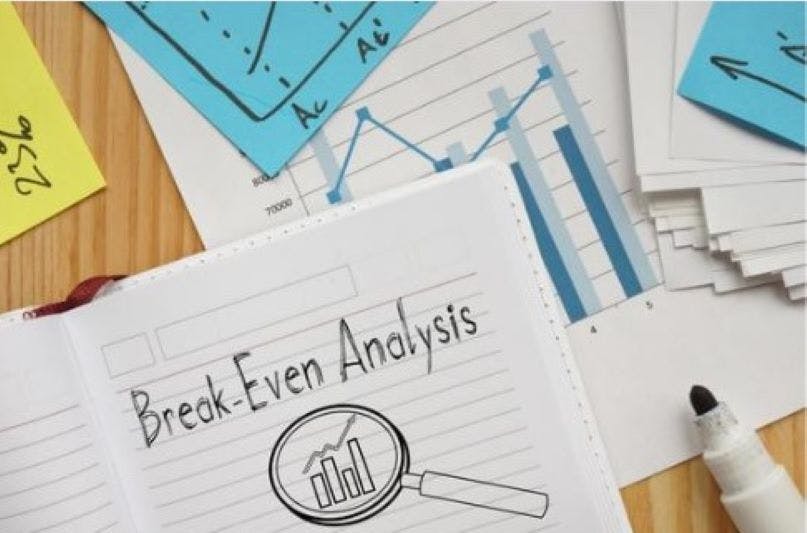
As a business owner, you probably have a trusted accountant who does the heavy financial lifting for you. But no matter how you trust them, you should have a grasp on accounting basics. Knowing the basics will help you make better financial decisions and better understand your discussions with your accountant.
To help you get started, here are some basic accounting terms that you should know:
Accounting
The process of keeping track of your business’s financial transactions by recording and reporting all the details.
Cash Flow
Cash flow describes the inflow and outflow of money from your business at any given time. A positive number means that more cash came into the business than left it, while a negative number means more money left the business than came into it.
Cash Flow Forecast
A document that will help you estimate your business’s cash flow and even your financial position over the next few months. Cash flow forecasts are typically prepared for a 12-month period.
Balance Sheet
A financial report that summarizes your business’s assets, liabilities, and shareholder equity. It is essentially a high-level summary of the business’s finances.
Capital
Financial assets of your business, such as cash, goods, and materials.
Certified Public Accountant
Better known as a CPA, a certified public accountant is an accountant who has passed a CPA and met government requirements to be termed a CPA. They represent individuals and companies before the Internal Revenue Service (IRS). In the US, the designation is awarded by the American Institute of Certified Public Accountants.
Accounts Payable
The amount of money that your business owes its creditors.
Accounts Receivable
An example of current assets pertains to the amount of money that clients and customers owe your business.
Accrued Expense
An expense that has not yet been paid by your business or logged into your accounts payable. These are expenses for which your business has not yet received invoices.
Liability
Debts that have not yet been paid by your business. It not only includes your accounts payable and accrued expenses but also other debts such as loans and payroll.
Expense
Any cost that has been incurred by your business.
Revenue
Any money that has been earned by your business.
Gross Profit
The profit earned by your business without taking the cost of your overhead expenses into account. Both your gross and net profit tell you how much your business makes after meeting costs.
Gross Margin
A percentage that represents the sales revenue of your business after deducting the cost of goods sold.
Net Income
Your business’s income after deducting the cost of goods sold, any tax to be paid, overheads, depreciation, and other expenses.

Canva/ Getty Images
Net Margin
A percentage that represents your business’s net profit in relation to the revenue. It is calculated by dividing the net income by the revenue for the same accounting period.
Cost of Goods Sold
The costs that are associated with producing the goods sold by your business. These include the cost of materials and direct labor required to create a product or provide a service.
Depreciation
The amount of value an asset held by your business has lost over a period of time. Common assets that undergo depreciation are fixed assets like vehicles and heavy equipment.
Credit
An entry that records a sum that has been received by your business. It represents an increase in equity, liability, or revenue accounts or a decrease in the asset or expense account.
Debit
An entry that represents an increase in your business's assets or a decrease in the liabilities of your business as recorded on the balance sheet.
Diversification
The act of allocating capital across various assets to reduce risk.
Fixed Cost
A cost that your business accrues that will not change regardless of sales volumes. Costs such as rent and salaries are fixed costs.
Variable Cost
A cost accrued by your business that changes according to the volume of sales. For example, material costs are variable costs – the more you sell, the more materials you will need to meet demand.
General Ledger
A complete record of all the financial transactions relating to your business.
Marginal Costs
The change in the total cost of your product when you produce one more unit. This can be calculated by dividing the total production cost by the number of products to be made.
Break-Even Analysis
The point at which income matches expenses for your business – that is, the point at which you are making neither a profit nor a loss.

Canva/ Getty Images
Burn Rate
A calculation to identify the length of time for which you can continue to cover the operating costs of your business without making a profit. Essentially, it is the rate at which your business is spending the money on hand without generating any positive cash flow.
Income Sheet
A document that details the net profits made by your business over a set period of time. Also known as the income statement, it serves as a benchmark for analyzing financial performance.
General Ledger
The complete record of all the financial transactions undertaken by your business. This is where you can find every accounting entry made.
Receipt
A document that serves as proof of payment. Receipts are generated when your business sells goods or services, and they are received by your business when the business pays for goods and services.
Business/Legal Entity
The legal structure of your business. Common structures include sole proprietorship, partnership, S-Corp, and limited liability corporation (LLC).
Accrual Accounting
An accounting method that tracks revenues and expenses based on the date of accrual rather than the date of payment.
Financial Statement
A collection of all financial documents about your business. Your financial statement will include your balance sheet, cash flow statement, and profit and loss statement.
Generally Accepted Accounting Principles (GAAP)
A set of rules that all accountants abide by in accordance with the Financial Accounting Standards Board (FASB). Ensuring your accounts, are GAAP-compliant enables your creditors and investors to quickly assess your company when applying for a loan.
Liquidity
A term that refers to how easy it is to convert an asset into cash.
Interest
The money paid on a loan or line of credit taken out by your business that is more than the money you initially borrowed. It is essentially the price of the money that you borrowed from the lender.
Material
Material refers to whether a piece of information will have any influence on business decisions. GAAP regulations mandate that all material considerations be disclosed.
Overhead
Expenses related to the running of the business. Overhead costs include rent, payroll, and salaries.
Payroll
A document that shows a list of your employees and the money to be paid to them. It includes salaries and wages, as well as any bonuses and deductions.
Equity
Refers to the shareholders’ stake in a business. It can be calculated by subtracting liabilities from assets.

Canva/ Getty Images
While it may seem easier to have your accountant keep track of all accounting-related issues, having a basic knowledge of your accounts will help you make better decisions relating to your business. These terms will help you predict your profits better and make better financial choices and avoid any pitfalls that seriously harm your business.